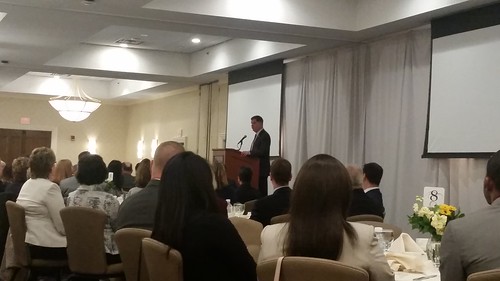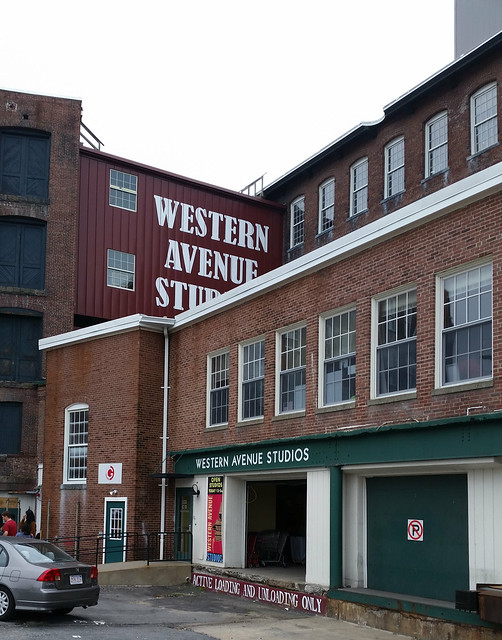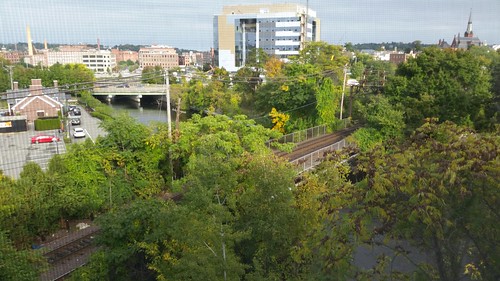Lowell Week in Review: October 7, 2018

Boston Mayor Marty Walsh at Lowell Plan Breakfast
2018 Lowell Plan Breakfast
This year’s Lowell Plan Breakfast was held on Friday, October 5, 2018, at the UMass Lowell Inn & Conference Center. The theme of the event was “collective vision” for the city.
The morning began with remarks from two recent graduates of the Public Matters program. Hillary Clark relocated to Lowell to work at UMass Lowell and Maria Clark came to the University as a student and stayed. (She now works at Middlesex Community College). They are both homeowners in Lowell and have become very involved in the community.
City Manager Eileen Donoghue was next. Here message was on the importance of getting city residents, both longtime and newly arrived, involved in civic life. She spoke from experience, recalling how back in 1988, she and her husband both purchased a house in Lowell. Despite both working in Boston, they were drawn to Lowell by its architecture and appearance.
On the first day on their new house, their unpacking was interrupted by a knock at the back door. It was Paul Tsongas who introduced himself (although Donoghue immediately recognized him) and invited them to an upcoming neighborhood block party. They attended the party and soon found themselves participating in non-profits and other volunteer activities in the city, a level of involvement that never would have occurred but for that knock at their door.
Donoghue said that Tsongas reached out to her again in 1995 when he urged her to run for the Lowell City Council. Politics was something she had never considered, but Tsongas’s comments caused her to contemplate running for office which she did successfully that year. She said she would always be grateful to Paul for launching her on a path of public service.
Donoghue shared these stories as emblematic of how the city sometimes works, but also how it can work for many others. Lots of people are interested in becoming involved in the community, she said, but just don’t know how. Just inviting them to participate gets them involved. She closed by urging everyone to reach out of their circle of acquaintances and get others to participate in the civic and public life of Lowell.
Next to the podium came Lowell Plan Executive Director Jim Cook who introduced this year’s Lowell Plan video which will soon be available for viewing on the organization’s website.
Following Cook was Diane Tradd, the city’s Assistant City Manager and Director of Planning and Development. Diane said it was an exciting time in Lowell and inventoried all the projects now underway. Here included:
- The Lowell Justice Center in the Hamilton Canal Innovation District (HCID). Opening Fall 2019;
- HCID North infrastructure installation; two roads, a bridge over the Pawtucket Canal and utilities. Work underway now with completion expected in 2019;
- Riverwalk II – this extends the current Riverwalk across Bridge Street and behind Mass Mills to the confluence of the Concord and Merrimack Rivers. A pedestrian bridge will then span the Concord to the grounds of the Lowell Memorial Auditorium;
- HCID Parking Garage – 930 spaces for $35mil with January 2020 completion date;
- Tiger Grant-funded canal bridges replacement and upgrade. Estimated completion in 2021;
- Lord Overpass remake – construction begins in spring 2019 to be finished in 2022;
- Lowell High School expansion and renovation.
Congresswoman Niki Tsongas spoke next. She said cities need an engaged Federal partner to succeed. Federal funding may be only a small piece but it often plays a “catalytic” role that helps cities achieve their vision for themselves.
Mayor Bill Samaras then introduced the keynote speaker, Boston Mayor Marty Walsh. Walsh said he was a big believer in regional collaboration. What happens in Boston affects Lowell and what happens in Lowell affects Boston. Both cities are part of the global economy and we can benefit from collaboration rather than completion.
Walsh said that when he became mayor in 2014, the city did not have an established strategic plan. In fact, the last time such a plan was created was in 1965. Much of what that plan has envision has been accomplished, but the process of development set out the plan is outdated. Back then, the Boston Redevelopment Authority was all-powerful and dictated which developments would or would not be undertaken. Many residents felt left out.
Early in his tenure, Walsh reorganized the BRA and changed its process and culture, making it more transparent and collaborative with members of the community. The resulting master plan, Imagine Boston 2030, didn’t just look at development opportunities. It looked at everything that makes a city – schools, open space, climate resiliency and transportation, for example.
Mayor Walsh closed by saying that planning is no longer a bunch of smart people huddled around a drawing board; it’s now relentless collaboration and engagement with all members of the community. The end product should be a plan that’s capable of evolving as circumstances change. An inflexible plan is doomed to obscurity.

ARToberfest at Western Ave
Western Avenue Studios drew a big crowd yesterday for its October “Open Studios” which was combined with a Lowell Celebrates Kerouac event at Navigation Brewery (which is on the ground floor of Western Ave Studios). The artist studios at Western Ave will also be open today from noon to 5 pm.

View of Judicial Center and HCID from Western Ave Studios. Railroad track and Pawtucket Canal in right foreground
Connecting Western Ave and Hamilton Canal District
At one point yesterday, I entered one of the upper floor studios at the eastern end of the Western Ave Studios building. The window was open and it presented a great view of the new Lowell Judicial Center and the rest of the Hamilton Canal Innovation District (see photo above).
The view was also a reminder of how crucial it is that we find a way to allow people to get to Western Ave from the Hamilton Canal District. Getting across Dutton Street at that point, which now is illegal and life-threatening, will become legal and safer soon after the Judicial Center opens. Part of that project includes extending Jackson Street to meet Fletcher Street where they both intersect with Dutton. There will be crosswalks and pedestrian lights there.
That challenge that will remain is getting people safely over the railroad tracks that cut across Western Ave and the Pawtucket Canal and continue under Chelmsford Street to the Gallagher Terminal. A year ago, there was some energy on the city council for dealing with this problem, but the preferred solution seemed to be a pedestrian bridge over the train track. That would be hugely expensive and not very practical, so the momentum faded away.
I’m convinced that the most feasible solution flows from a Lowell National Historical Park project that is now in the very preliminary planning stages. This project is called the Pawtucket Canal Walkway. The Pawtucket Canal leaves the Merrimack near the Lowell Motor Boat Club, passes under Pawtucket Street and curves around School Street hill to reach the Hamilton Canal Innovation District and eventually flow into the Concord River behind the UMass Lowell Inn and Conference Center. Along that way, the Pawtucket Canal flows behind Western Avenue Studios.
In concept, this pedestrian walkway would run along the bank of the Pawtucket Canal, allowing people to walk from Pawtucket Street to Dutton Street. This walkway would intersect the currently impassible train tracks, but because the tracks are elevated several feet above the top of the canal bank, it would be feasible for the walkway to pass underneath the train tracks with only the minimum amount of digging. Once under the train track, the walkway would continue another 50 feet until it ended at Dutton Street.
Unfortunately for the cause of access to Western Ave Studios, the proposed walkway is on the other side of the Pawtucket Canal from the Studios. But, installing a pedestrian only bridge across the canal at that point would be relatively affordable, certainly far less expensive than a bridge over the train tracks.
Western Ave Studios is a hive of innovation and economic activity. Allowing pedestrian access to it from the Hamilton Canal Innovation District would only make the HCID a more desirable place for businesses to locate and people to live. Solving the access to Western Ave riddle should be a top priority for all interested in the economic development of the city.

Richard Howe for Register of Deeds
The election is 30 days from today. Please consider volunteering to help my campaign for re-election as Register of Deeds. If you are unable to contribute your time, please consider making a campaign donation.
Digging under the railroad tracks may be more difficult than initially envisioned. An alternative could be to build the walkway as a suspension over the canal for a segment long enough to minimize the slope getting underneath the tracks.
The point at which the bridge could cross the canal to WAS is roughly at the fork of Branch and Middlesex Streets. If a connection is build there, it could also connect the site to Cambodiatown.
Could such a structure be ADA/ABA compliant?